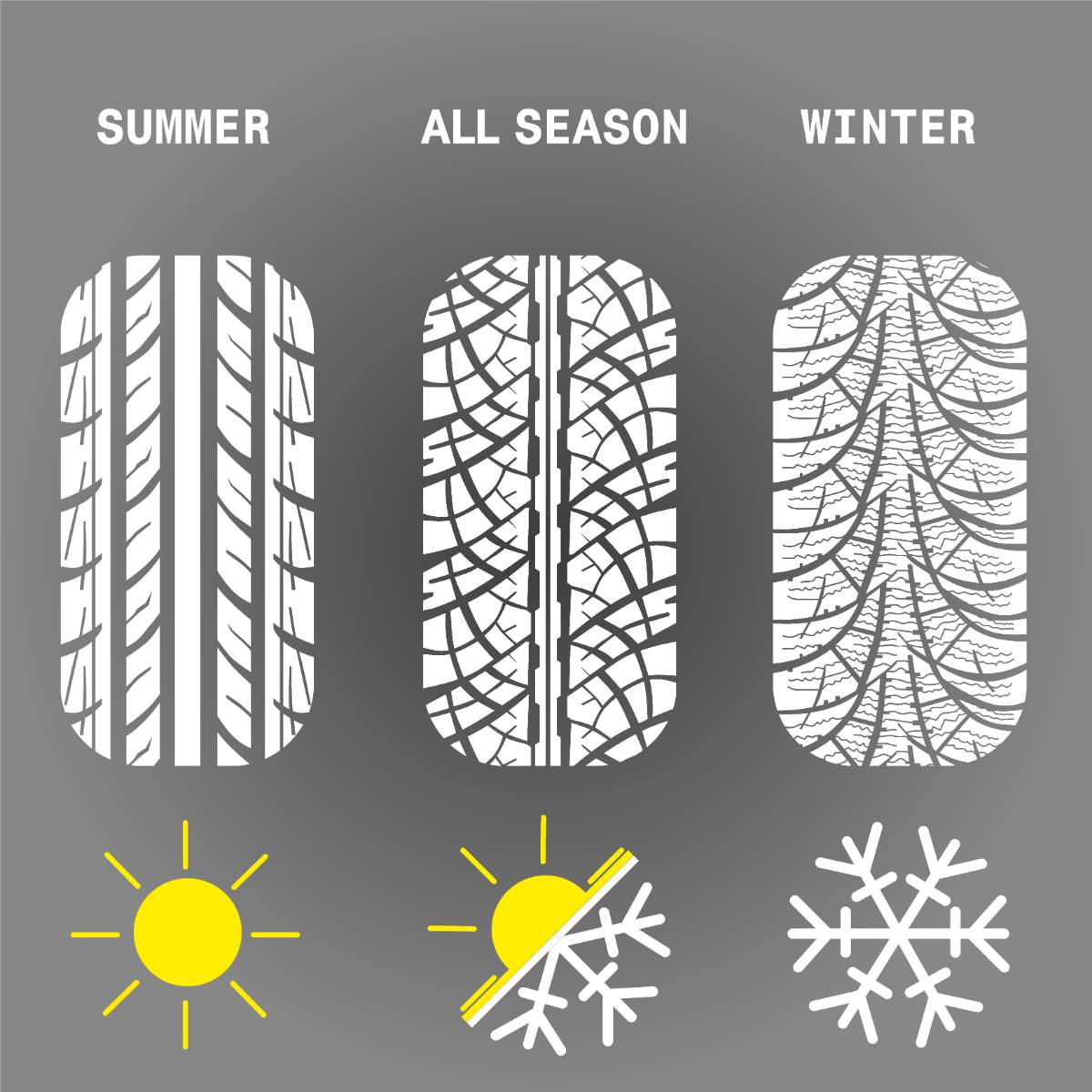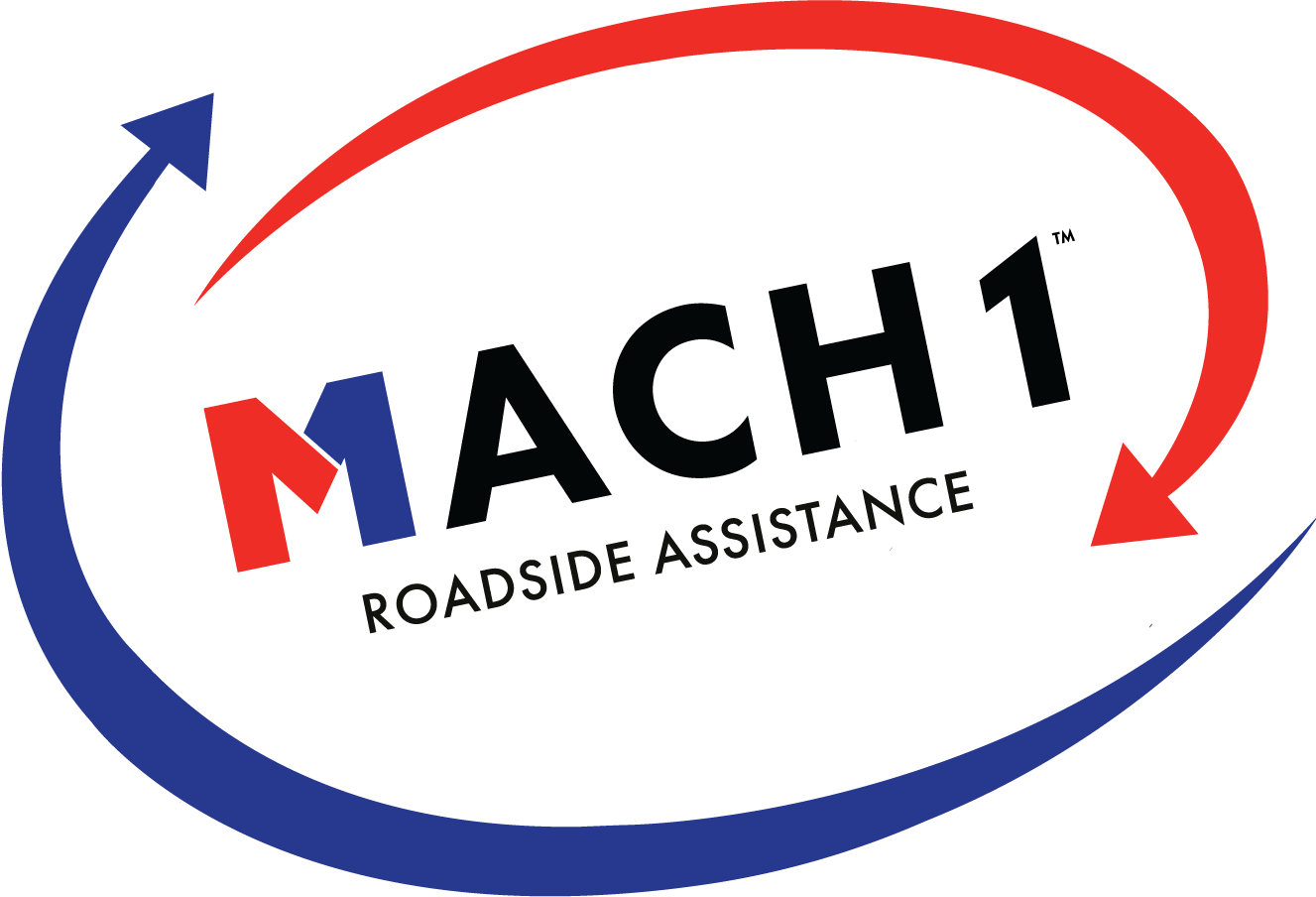
07 Aug 5 Key Differences Between All Season and Winter or Summer Tires
When it comes to vehicle performance and safety, choosing the right tires is a critical decision. Not all tires are the same, and understanding the difference between summer, winter, and all-season tires can help you make an informed choice for your vehicle. In this article, we will focus on the five key differences between all-season and winter or summer tires.
What Are the Different Types of Tires I Can Put on My Vehicle?
Tires come in various types, each designed to perform optimally under specific driving conditions. The primary categories are summer, winter (or snow), and all-season tires.
Summer Tires: Optimized for high-performance driving, summer tires offer excellent grip and handling in both dry and wet conditions. However, they’re not ideal for cold temperatures or snowy conditions.
Winter Tires: Also known as snow tires, these are designed to perform in cold, snowy, and icy conditions. They offer better traction, handling, and braking performance when temperatures drop below 7°C (45°F).
All-Season Tires: Designed to be a hybrid of summer and winter tires, all-season tires aim to offer a good performance year-round. They work reasonably well in many conditions, including light winter driving, but do not excel in any particular area compared to dedicated summer or winter tires.
What is the Difference Between Summer, Winter, and All Season Tires?
Each type of tire has specific design elements that allow it to perform best under certain conditions.
Summer Tires: These are designed with specialized rubber compounds that stay flexible in warm temperatures, providing superior traction. Their tread patterns allow for maximum road contact, improving handling and braking.
Winter Tires: These tires use special rubber compounds that stay flexible in cold temperatures for better grip. The tread design features larger gaps and biting edges for better traction on snow and ice.
All-Season Tires: These tires use moderate tread depths and rubber compounds designed to provide longer tread life than summer or winter tires. The tread design aims to offer good performance in a variety of conditions.
Now that we understand the basic types of tires, let’s delve into the five key differences between all-season and winter or summer tires.
5 Key Differences Between All Season and Winter or Summer Tires
- Temperature Performance: All-season tires are designed to handle a range of temperatures, but they don’t perform as well in extreme cold as winter tires. Conversely, they can handle warm temperatures better than winter tires, but not as well as summer tires.
- Tread Pattern: Winter tires have larger tread blocks with more sipes (small slits) to provide better grip on snow and ice. Summer tires have fewer tread blocks and sipes, which allows for more rubber contact with the road, providing better grip in dry conditions. All-season tires feature a balanced tread pattern that performs adequately in a range of conditions.
- Rubber Composition: Winter tires are made from softer rubber that stays pliable in cold temperatures, while summer tires use a harder rubber that can withstand high heat without becoming overly soft. All-season tires use a medium-soft rubber compound to strike a balance between the two.
- Traction and Handling: Winter tires provide the best traction and handling in snowy and icy conditions. In contrast, summer tires offer superior traction and precision handling in dry and wet conditions. All-season tires offer fair traction and handling across a variety of conditions but do not excel in any extreme conditions.
- Wear Rate: Because of their softer rubber composition, winter tires wear faster in warmer temperatures. Summer tires can wear quickly in high heat if they’re pushed hard. All-season tires typically offer longer tread life, as they’re designed for year-round use.
How Can You Tell the Difference Between Winter and All-Weather Tires?
Looking at the tread pattern can often give you a clue. Winter tires typically have larger tread blocks with more sipes for better grip on snow and ice. A symbol of a snowflake inside a mountain on the sidewall indicates that the tire meets a certain performance standard in snow testing, qualifying it as a winter tire.
Is it OK to Use Winter Tires All Year?
While it’s not unsafe to use winter tires all year, it’s not recommended due to the fast wear rate of winter tires in warm temperatures. Their softer rubber compounds can degrade quickly in the heat, leading to reduced performance and potentially requiring more frequent tire replacements.
Are Summer or All-Season Tires Better for Rain?
Summer tires generally have the best wet traction due to their tread design and rubber compounds. However, many all-season tires also offer excellent wet traction. It’s important to remember that any tire’s performance in the rain will depend on its tread depth, age, and overall condition.
Do I Want Winter or All-Season Tires?
This decision largely depends on your local climate and driving conditions. If you live in an area with harsh winters, having a set of winter tires is a wise decision. If you’re in a milder climate with little to no snowfall, all-season tires may be a more practical choice. Remember to consult your vehicle’s owner’s manual and a tire professional for the best advice.
What is Different About All-Season Tires?
All-season tires are designed to offer a mix of the benefits of both winter and summer tires. They’re built to provide adequate performance in a variety of conditions including dry roads, wet roads, and light snow. However, while they can handle many situations decently, they may not perform as well as dedicated summer or winter tires under extreme conditions.
Final Thoughts on the Differences Between All-Season and Winter or Summer Tires
Choosing the right tires is all about understanding your driving conditions and knowing what each type of tire can offer. It’s about balancing the need for performance in certain conditions against the practicality and cost implications of using a particular type of tire.
And remember, no matter what type of tires you choose, regular maintenance, including checking tire pressure, tread depth, and alignment, is key to ensuring optimal performance and safety. If you encounter any issues while on the road, reach out to a reliable roadside assistance provider.
For more information on tires, consider visiting this comprehensive guide. Choosing the right tires isn’t just about enhancing your vehicle’s performance; it’s also a critical factor in your safety on the road.
